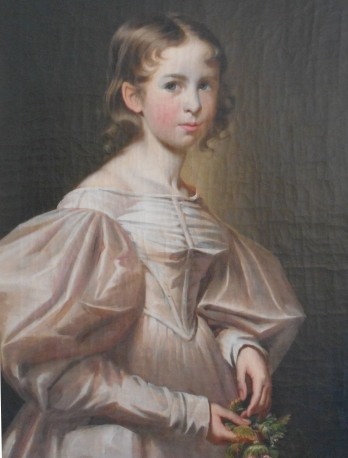
People sometimes assume that American women in the 19th century were meek and undemanding homebodies. But were they? Well, some probably were, but certainly not all, and things were starting to change.

Catharine Esther Beecher. Illustration from Woman’s Record; or Sketches of All Distinguished Women by Sarah Josepha Hale, 1853
According to the influential American educator Catharine E. Beecher (1800–1878):
If, on the one hand, an American woman cannot escape from the quiet circle of domestic employments, on the other hand, she is never forced to go beyond it. Hence it is, that the women of America, who often exhibit a masculine strength of understanding, and a manly energy, generally preserve great delicacy of personal appearance, and always retain the manners of women, although they sometimes show that they have the hearts and minds of men. A Treatise on Domestic Economy (1843)
Beecher wrote that American women often showed “a manly energy” and sometimes had the “hearts and minds of men,” but they still had “great delicacy” and were confined to the “quiet circle” of domesticity. Her views were both enlightened and traditional. Like many of her contemporaries, she believed that women and men inhabited separate “spheres.” Although Beecher touted the equality of women’s intellects and was a progressive advocate for female education, she opposed women’s suffrage and thought that they were more suited to a vital domestic role. Some agreed; others did not.

Souvenir card published in 1908 at Seneca Falls, New York, in commemoration of the 1848 convention. Library of Congress, Rare Book and Special Collection Division, NAWSA Miller Scrapbook Collection. New York, the birthplace of the women’s rights movement, gave women the vote in 1917. This year marks the centennial of women’s suffrage in the Empire State.
In 1848, the first women’s rights convention was held at Seneca Falls, New York, and was attended by activists such as the abolitionists and reformers Lucretia Mott and Frederick Douglass. Women’s rights activist Elizabeth Cady Stanton (1815–1902) helped draft a Declaration of Sentiments that recognized unequal, oppressive, and tyrannical treatment of women and included a list of grievances against the American government that ranged from obedience in marriage to exclusion from the ministry to a different moral code for men and women. The declaration was signed by one hundred attendees.
Now, in view of this entire disfranchisement of one-half the people of this country, their social and religious degradation, in view of the unjust laws above mentioned, and because women do feel themselves aggrieved, oppressed, and fraudulently deprived of their most sacred rights, we insist that they have immediate admission to all the rights and privileges which belong to them as citizens of these United States.

William R. Hamilton (Scottish, American 1795–1879). Catherine Jane Masterton, 1834. Oil on canvas. Collection of Mary Means Huber
Bartow-Pell’s fall exhibition explores and celebrates the daily lives of nineteenth-century American women and girls within this century of change. Artwork, clothing, books, decorative arts, domestic items, ephemera, and other objects provide a glimpse of the female world at this time. A highlight is a portrait of ten-year-old Catherine Jane Masterton of Bronxville by the Scottish-born painter William R. Hamilton (1795–1879), which will be on loan from a private collector of Americana and has rarely been on public view. Upcoming blog posts will take a closer look at some of the stories that have emerged through the exhibition objects.
The “Quiet Circle”: Women and Girls in 19th-Century America will be on view from September 1 to November 19 in Bartow-Pell’s library exhibition space and in some of the period rooms.
Margaret Highland, Exhibition Curator


Pingback: Index | mansion musings
Pingback: Curator and Collector: Mary Means Huber | mansion musings